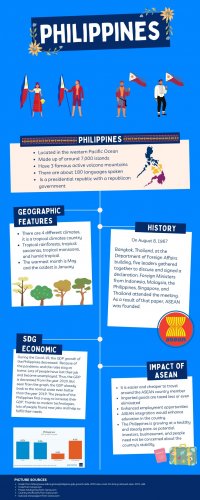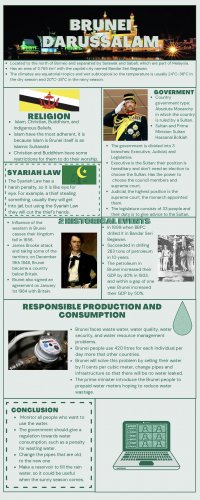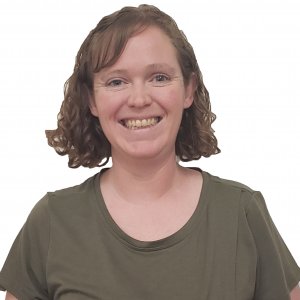While preparing for my teaching grant at Tunghai University, International College Dean, Dr. James Sims, asked me to design a world history course that introduced students to foundational concepts from history and geography. His request was particularly exciting to me because I have a passion for history, but don’t often get to pursue this interest as a Science, Engineering, Technology and Math (STEM) librarian at the Colorado School of Mines (Mines). As course development began, I knew that as a librarian, I also wanted to incorporate the opportunity to practice research and information evaluation skills in class. From these goals came my course, History and Geography for our Interconnected World.
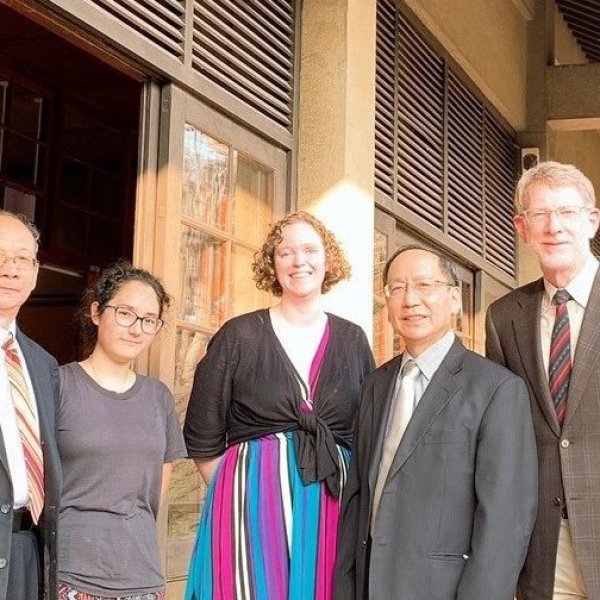

Over 13 weeks, 43 students and I worked our way through approximately 800 years of world history. We utilized the SPICE framework to explore the social; political; environmental [interactions], cultural and economic aspects of history. Covering that amount of content in a single, shortened semester can be very difficult for students to follow. It can also be difficult to connect events, people and cultural developments throughout history to their lives in the 21st century. To mitigate these concerns, I designed a course-long project that helped students connect modern countries to their historical development. Early in the course, students adopted a country of interest and selected one of the United Nations Sustainable Development Goals (SDG) important to their country. By the end of the course, students were able to make recommendations for achieving their goals based on history.
The students chose their countries based on personal history, interest to study or travel the country or because it sounded interesting. They chose countries wealthy and poor, large and small from all over the world. In keeping with Dr. Sims’s goal, students could select any country except for Taiwan, China, South Korea or Japan because these are the countries the students would be most familiar with. Absent from the list were two more countries: North Korea was excluded due to a lack of reliable information and Indonesia was excluded because almost 1/3 of the class is Indonesian. The restrictions asked students to stretch beyond their comfort zone. They also selected SDGs based on personal interest or a basic understanding of their country. Every goal was selected except for #10 Reduce Inequalities, probably because students chose #5 Gender Inequality instead. #17 Partnerships for the Goals was excluded because it focuses on helping the other goals work together.
Through 5 assignments the students developed a better understanding of their chosen countries. They explored aspects such as country history, government, regional geography and economics in 8 research reflections. Two major assignments, a country proposal and an annotated bibliography helped them to reflect on their research conducted thus far and areas for improvement – achieving my goal to incorporate meaningful research skills into the course. Finally, they presented their findings and made suggestions for achieving their chosen goal in a final paper and poster. Their research was very insightful as they identified significant historical developments that had a long term impact on their country. Their practical and meaningful suggestions for achieving the SDGs included methods for increasing agricultural capacity, adopting new renewable energy sources and improving education. Their work also showed significant improvement in research skills throughout the course. Sources like Britannica and Wikipedia were heavily used for the first assignment, the country proposal, whereas their final reports, 11 weeks later, relied primarily on scholarly articles, government sources, UN data, local news and think tank reports.
The unique nature of the Tunghai University International College (IC) made our learning experience more impactful than it otherwise would have been. The IC has students from Taiwan, the US and dozens of other countries from all over the world. The students in my class represented 11 different countries, mostly in East and Southeast Asia, leading Dr. Sims to describe the class as a little UN. The students brought lived experiences to the course, providing it with richness and depth not found in the average classroom. They had been to or lived in many of the countries they researched. They also could relate more directly to many events in twenty and twenty-first century history such as the ongoing legacy of western colonialism that has impacted the development of many of the countries they chose to study.
I consider myself to be a reflective instructor, improving my teaching based on lessons learned in the classroom. Successes and struggles with different types of activities, assessments and lessons inform the continuous development of my teaching materials and skills. But the experience of teaching this course helped me to reflect in new ways and on a much deeper level. After class, I took the time to mentally review that lesson while it was fresh in my mind. I considered the parts that had gone well and the areas for improvement. I listed terminology that had been confusing or that could use further elaboration in future lessons. This purposeful reflection helped me to continuously improve throughout the course.
As a librarian, this course enabled me to trace and impact student research skills throughout the entirety of the course. Typically, I work with students across the Mines curriculum, joining them in class for 1 or 2 class sessions to teach specific skills and lessons. I don’t often have the opportunity to follow up or revisit skills later in their course. In my history course, I was able to serve as my own embedded librarian. Each class session we spent part of our time together exploring a different research skill. We discussed how to find different types of information, such as government sources or local news. We practiced evaluating sources and writing citations. Most importantly, I was able to revisit skills that students found confusing. For example, after students submitted their annotated bibliographies in week 8, we revisited skills they had struggled with on the assignment. We practiced citing scholarly articles, which is more complicated than citing websites. We also spent time searching for current research on the SDGs. Some students struggled to find substantial research on the SDGs either because their chosen country was quite small, like St. Lucia, or struggling to achieve the goals, like South Sudan.
Our lessons on research provided me with the opportunity to reflect on the skills and my teaching of the skills. Teachers can often get into a habit of teaching the lesson as it’s always been taught, rarely taking the time to evaluate its success. I’ve taught hundreds of lessons on finding sources in my professional career, but it was in teaching this class I was able to reflect more deeply on the true success of those lessons. I could explore questions about how well students were learning and what they still needed to practice. I also had the ability to explore how other sources of information might fit into their research. As source authority is constructed and sources considered authoritative in many western cultures may not hold the same value in other cultures, other sources and authority figures may prove equally or even more important. Helping students to locate research on and from their chosen country allowed me to explore this shifting nature of authority in a very real and tangible way.
I learned so much from my students throughout the course. At three points, beginning, middle and end, I asked them to complete a brief survey in which they rated their confidence in their research skills and provided me with feedback. The skills rating helped me to plan future research lessons. I could compare their perceived skill in the survey with their demonstrated skill in course assignments like the annotated bibliography. I was also able to incorporate their feedback mid-course, improving their learning experience. Students asked for more videos, examples of successful assignments and less reading homework. I was able to easily implement two of their suggestions, adding more videos to the supplemental materials for each class and being more intentional about what I was assigning for reading each night. Unfortunately, as this was the first time the course had been taught, I couldn’t provide them with examples from past students.
The course also provided the opportunity to utilize different types of resources and activities. It was important to me that our textbook and other course materials be open educational resources (OER). OER are low or no cost learning materials that supplement or replace traditional textbooks. I chose OER for specific reasons. Most world history textbooks written in English are overwhelmingly focused on a Eurocentric world view, significantly neglecting other parts of the world. I found the newly published Modern World History by Allosso and Williford met my needs for the course.It provided broad coverage of world history without overwhelming students with reading homework. I didn’t want to teach a course in which most of my students couldn’t see their countries and cultures represented in the material, especially if we are going to call it world history. I incorporated History of International Relations: A Non-European Perspective by Ringmar to introduce students to different perspectives.. I also added World Regional Geography by the University of Minnesota to help students further explore their chosen countries. In all, I used parts of 5 different textbooks throughout the course at zero cost to students.
While developing the course and preparing for my grant, I learned about an international OER mentorship program, Open Education for a Better World (OE4BW). Through the program, developers create OER that help to achieve or directly relate to the UN SDGs. By October the entire course, including lectures, activities and assignments, will be available on the OER Commons platform. Teachers around the world will be able to use the course materials, translate them into other languages and adapt the course to their own local needs.
After returning to the US in July, I will use lessons learned from teaching the course in Taiwan for further enhancements. I intend to design quizzes that can be used to test knowledge of the reading material. I also intend to seek out supplemental materials that can be used by course adoptees. I would like to enhance student learning with more diverse supplemental materials, for example those on Filipino perspectives on WWII or South African resources on Apartheid. Thanks to several students in this first teaching of the course, I will also be able to include samples of successful student work for future students to see, addressing the final request made by my students. It is my hope that course adoptees will also share their additions and adaptations to the course, making it more robust.
Although the course didn’t end the way I had expected – online instead of in person with presentations and a party – it was undoubtedly one of the most profound teaching experiences of my career. I learned about myself as an educator and course designer. I learned about the unique nature of the international classroom and how it can enrich the experience of learning history. Most importantly, I learned about myself as a teacher and the types of learning experiences that I can create for my students. I can apply those lessons learned to my teaching at the Colorado School of Mines, improving the educational experience of my students.
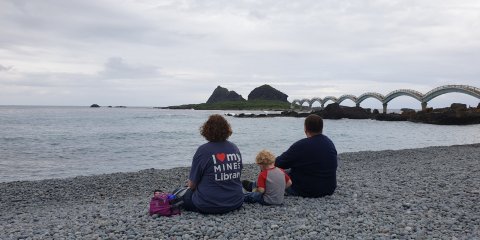
Managing Editor: 陳世威 Shih-wei Chen

